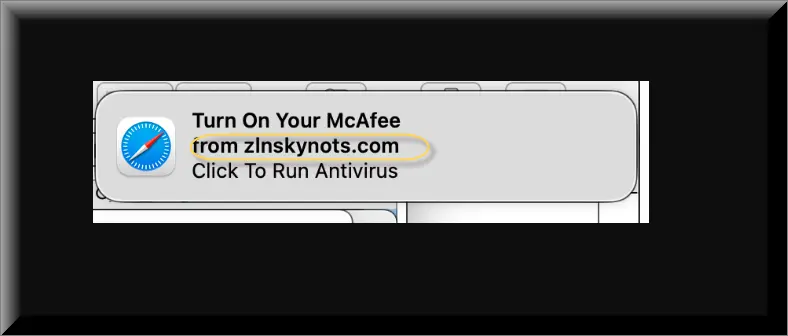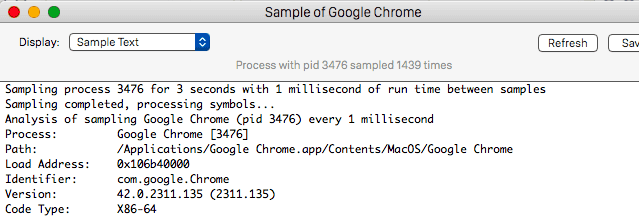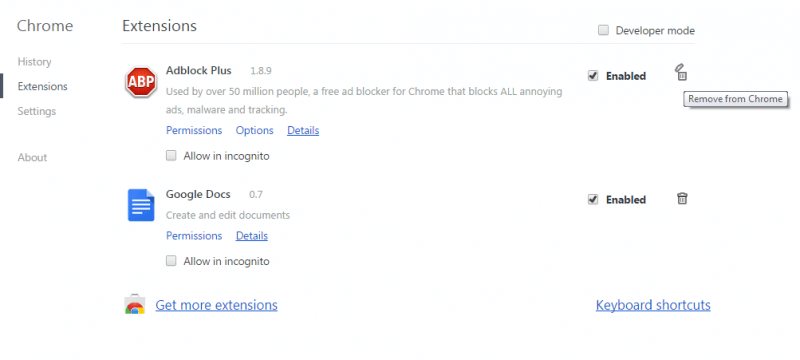In recent times, an increasing number of Mac users have reported encountering persistent pop-ups from a dubious source identified as “Zinskynots.” These intrusive notifications often masquerade as antivirus warnings, causing confusion and concern among users. This article aims to demystify the Zinskynots phenomenon, offering a detailed analysis and practical solutions to combat these scams effectively. By understanding the nature of Zinskynots and adopting robust security practices, you can safeguard your Mac against such unwelcome intrusions.

What is Zinskynots?
Zinskynots appears to be a form of malicious software (malware) or potentially unwanted program (PUP) that targets Mac users through Safari pop-up scams. The pop-ups typically display alarming messages, such as expired antivirus subscriptions, urging users to take immediate action. These notifications are not only misleading but also serve as bait to trick users into downloading more malware or parting with personal information.

Key Characteristics of Zinskynots Scam:
- Fake Antivirus Alerts: Users receive notifications claiming that their antivirus has expired and needs renewal.
- Persistent Pop-ups: The pop-ups appear frequently, regardless of the website being visited.
- Lack of Installed Antivirus: Many affected users do not have any antivirus application installed, indicating the scam’s fraudulent nature.
Is Zinskynots Real?
No, Zinskynots is not a legitimate alert or software. It’s a scam designed to exploit user fears about security vulnerabilities. The ultimate goal of such scams is to deceive users into downloading malicious software or revealing sensitive information.
How to Avoid Zinskynots Scam
Protecting your Mac from Zinskynots requires a combination of preventive measures and cautious online behavior. Here are key strategies to avoid falling victim to such scams:
- Update Your Mac Regularly: Ensure your macOS and all installed applications are up to date to benefit from the latest security patches.
- Use a Reputable Antivirus: Installing a trustworthy antivirus solution can help detect and block malware and potentially unwanted programs.
- Enable Pop-Up Blocker in Safari: Safari’s built-in pop-up blocker can prevent many unwanted pop-ups from appearing.
- Exercise Caution with Links and Downloads: Avoid clicking on suspicious links or downloading software from untrusted sources.
How to Eliminate Zinskynots Pop-ups
If Zinskynots pop-ups have already infiltrated your Mac, follow these steps to eliminate them:
- Close Suspicious Pop-ups: Use the ‘ESC’ key or Safari’s ‘Stop’ button to close pop-ups without interacting with them.
- Clear Safari’s History and Website Data: This can help remove traces of the scam from your browser.
- Scan Your Mac for Malware: Use a reputable antivirus program to scan your Mac for any malware or PUPs that might be causing the pop-ups.
- Check for and Remove Suspicious Applications: Go to the ‘Applications’ folder and remove any recently installed or unrecognized applications.
- Reset Safari: If the problem persists, consider resetting Safari to its default settings, but note that this will erase your browsing history, saved passwords, and other data.
How Do Zinskynots Infect My Mac?
Zinskynots, like many other scams, primarily spreads through deceptive advertisements, compromised websites, and bundled software installations. Users may unknowingly trigger the download of malicious software by clicking on a fake ad or installing free software that comes with hidden extras.
Tips to Block and Remove All Scam Pop-ups
To enhance your online safety and prevent future intrusions, consider the following tips:
- Enable Enhanced Security Features: Utilize your Mac’s built-in security features, such as Firewall and FileVault, to enhance protection.
- Use Content Blockers: Content blockers can help filter out unwanted content, including malicious advertisements and trackers.
- Educate Yourself About Online Scams: Awareness of the common tactics used by scammers can help you recognize and avoid potential threats.
By adopting a proactive and informed approach to online security, you can effectively combat Zinskynots and other similar, like Stateful Firewall, scams. Remember, the key to staying safe online is a combination of using the right tools and practicing cautious browsing habits. Stay informed, stay secure, and ensure your digital experience remains uninterrupted by such pesky intrusions.
SUMMARY:
| Name | Zinskynots |
| Type | Adware/Browser Hijacker |
| Danger Level | Medium (nowhere near threats like Ransomware, but still a security risk) |
| Symptoms | Popups, banners, box messages and other online ads start filling your screen regardless of the pages you visit. |
| Distribution Method | As an added component to the installers of other applications, such as different system optimization tools, etc. |
| Detection Tool |
Zinskynots Removal
For a quick way to remove Zinskynots try to do this inside your Mac browser:
- Open your Mac browser.
- Go to Preferences.
- Now navigate to the extensions sub-menu.
- Look for any unfamiliar entries, including Zinskynots.
- Remove Zinskynots from your Mac as well as any other suspicious-looking items by clicking on the trash bin icon.
If this does not help then continue reading this article for more detailed instructions on how to get rid of Zinskynots!

The first thing you need to do is to Quit Safari (if it is opened). If you have trouble closing it normally, you may need to Force Quit Safari:
You can choose the Apple menu and click on Force Quit.
Alternatively, you can simultaneously press ⌘ (the Command key situated next to the space bar), Option (the key right next to it) and Escape (the key located at the upper left corner of your keyboard).
If you have done it right a dialog box titled Force Quit Applications will open up.
In this new dialog window select Safari, then press the Force Quit button, then confirm with Force Quit again.
Close the dialog box/window.

WARNING! READ CAREFULLY BEFORE PROCEEDING!
Start Activity Monitor by opening up Finder, then proceed to
Once there, look at all the processes: if you believe any of them are hijacking your results, or are part of the problem, highlight the process with your mouse, then click the “i” button at the top. This will open up the following box:

Now click on Sample at the bottom:

Do this for all processes you believe are part of the threat, and run any suspicious files in our online virus scanner, then delete the malicious files:


The next step is to safely launch Safari again. Press and hold the Shift key while relaunching Safari. This will prevent Safari’s previously opened pages from loading again. Once Safari is opened up, you can release the Shift key.
On the off chance that you are still having trouble with scripts interrupting the closing of unwanted pages in Safari, you may need to take some additional measures.
First, Force Quit Safari again.
Now if you are using a Wi-Fi connection turn it off by selecting Wi-Fi off in you Mac’s Menu. If you are using a cable internet (Ethernet connection), disconnect the Ethernet cable.

Re-Launch Safari but don’t forget to press and hold the Shift button while doing it, so no previous pages can be opened up. Now, Click on Preferences in the Safari menu,

and then again on the Extensions tab,

Select and Uninstall any extensions that you don’t recognize by clicking on the Uninstall button. If you are not sure and don’t want to take any risks you can safely uninstall all extensions, none are required for normal system operation.![]()
The threat has likely infected all of your browsers. The instructions below need to be applied for all browsers you are using.
Again select Preferences in the Safari Menu, but this time click on the Privacy tab,
Now click on Remove All Website Data, confirm with Remove Now. Keep in mind that after you do this all stored website data will be deleted. You will need to sign-in again for all websites that require any form of authentication.
Still in the Preferences menu, hit the General tab

Check if your Homepage is the one you have selected, if not change it to whatever you prefer.
Select the History menu this time, and click on Clear History. This way you will prevent accidentally opening a problematic web page again.
How to Remove Zinskynots From Firefox in OSX:
Open Firefox, click on ![]() (top right) ——-> Add-ons. Hit Extensions next.
(top right) ——-> Add-ons. Hit Extensions next.

The problem should be lurking somewhere around here – Remove it. Then Refresh Your Firefox Settings.
How to Remove Zinskynots From Chrome in OSX:
Start Chrome, click ![]() —–>More Tools —–> Extensions. There, find the malware and select
—–>More Tools —–> Extensions. There, find the malware and select ![]() .
.

Click ![]() again, and proceed to Settings —> Search, the fourth tab, select Manage Search Engines. Delete everything but the search engines you normally use. After that Reset Your Chrome Settings.
again, and proceed to Settings —> Search, the fourth tab, select Manage Search Engines. Delete everything but the search engines you normally use. After that Reset Your Chrome Settings.
If the guide doesn’t help, download the anti-virus program we recommended or try our free online virus scanner. Also, you can always ask us in the comments for help!

Leave a Reply